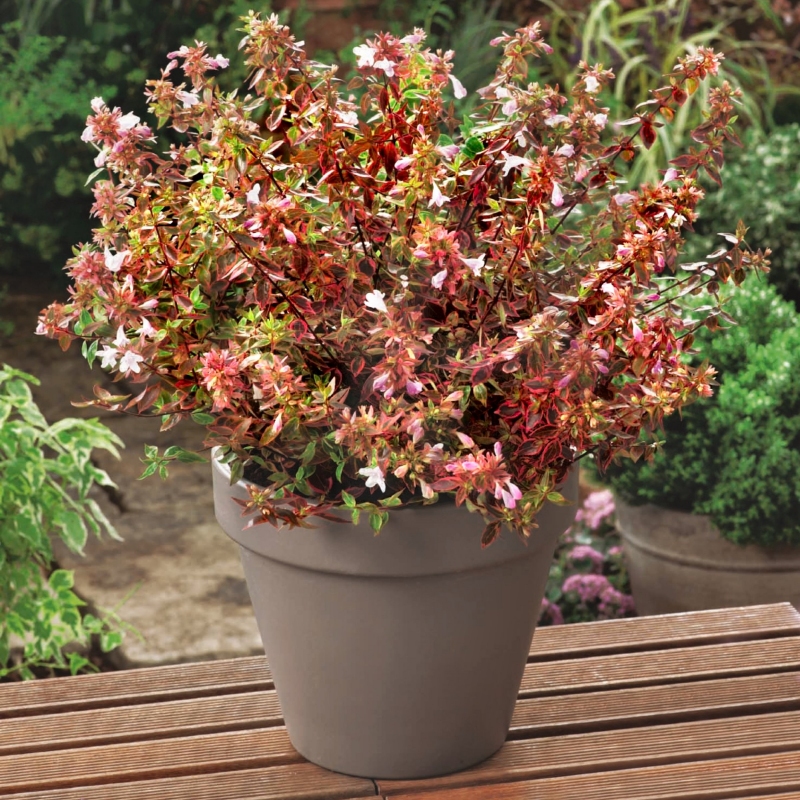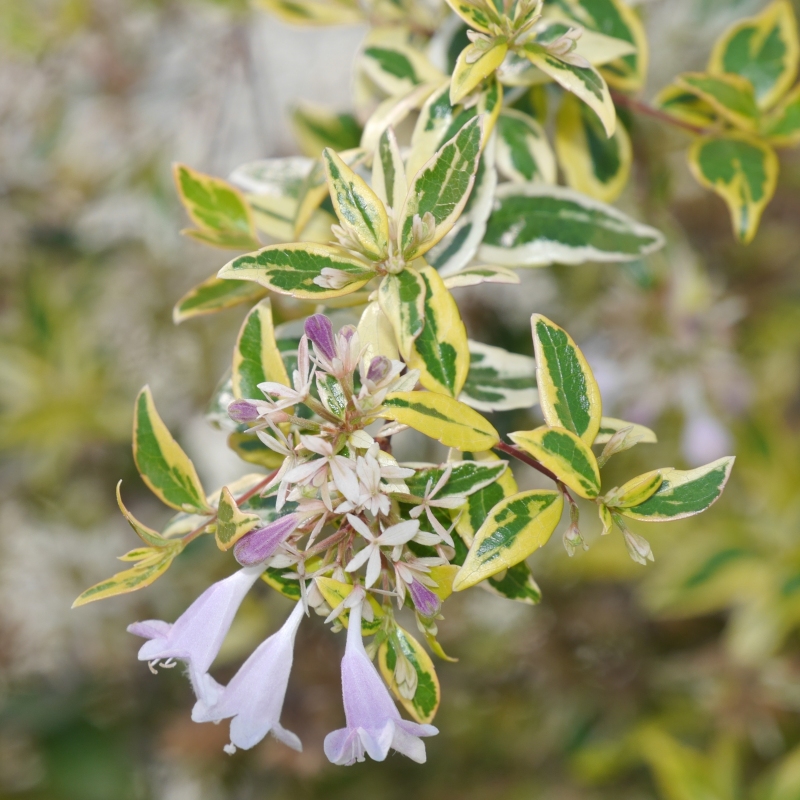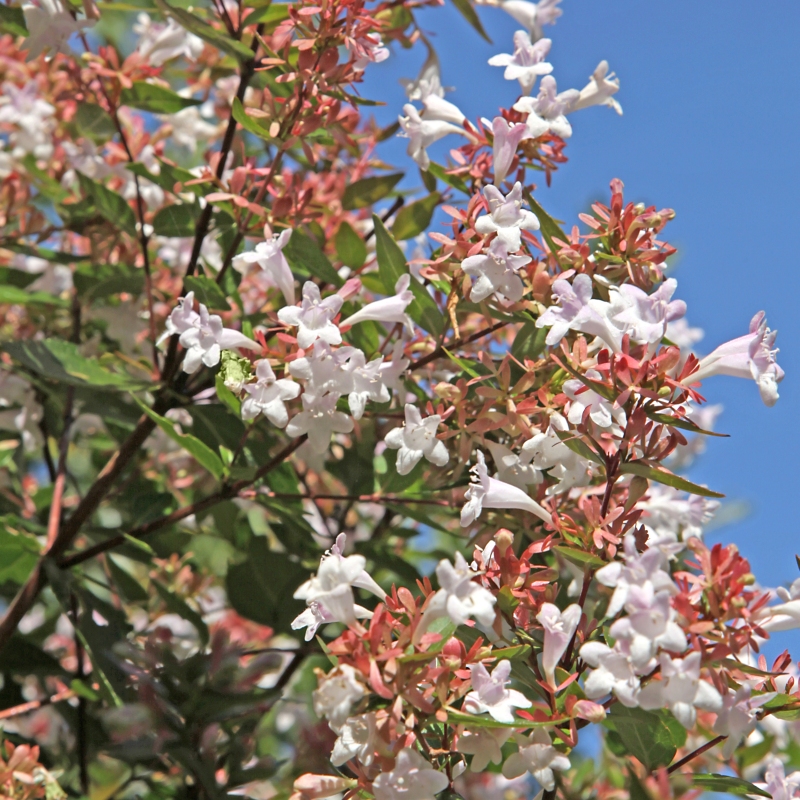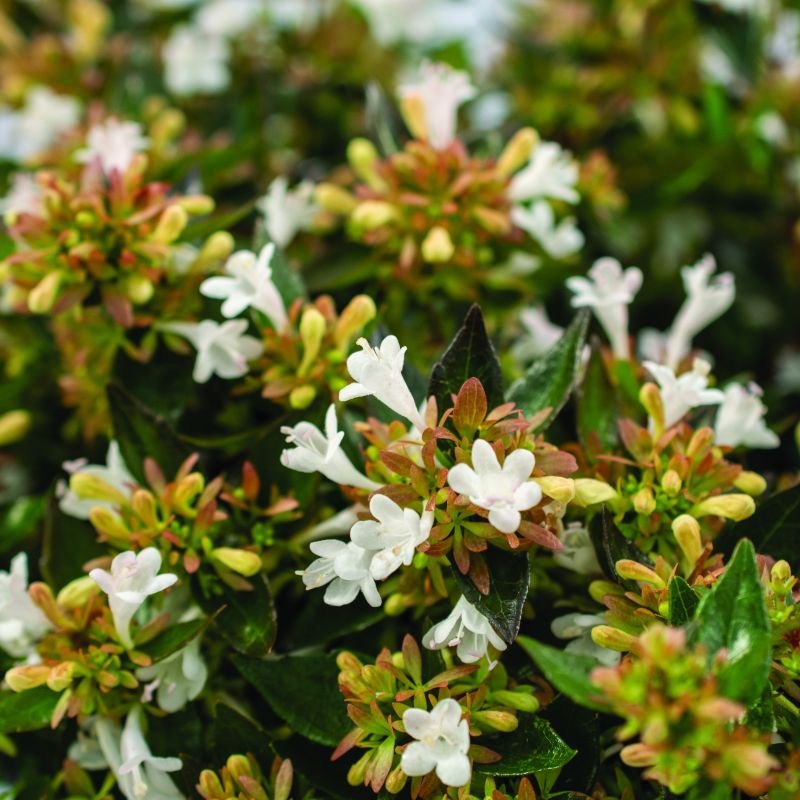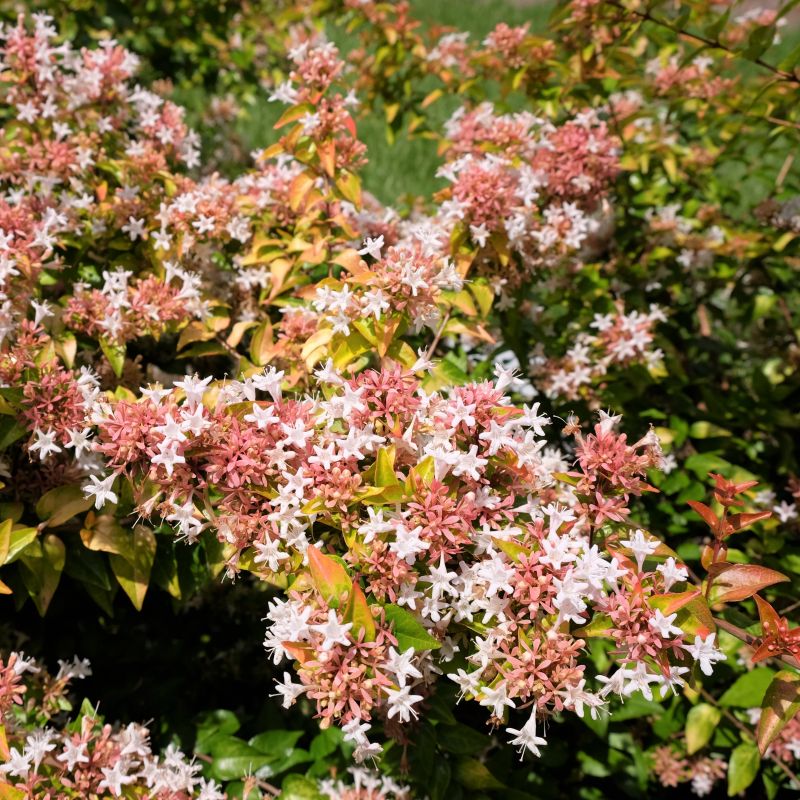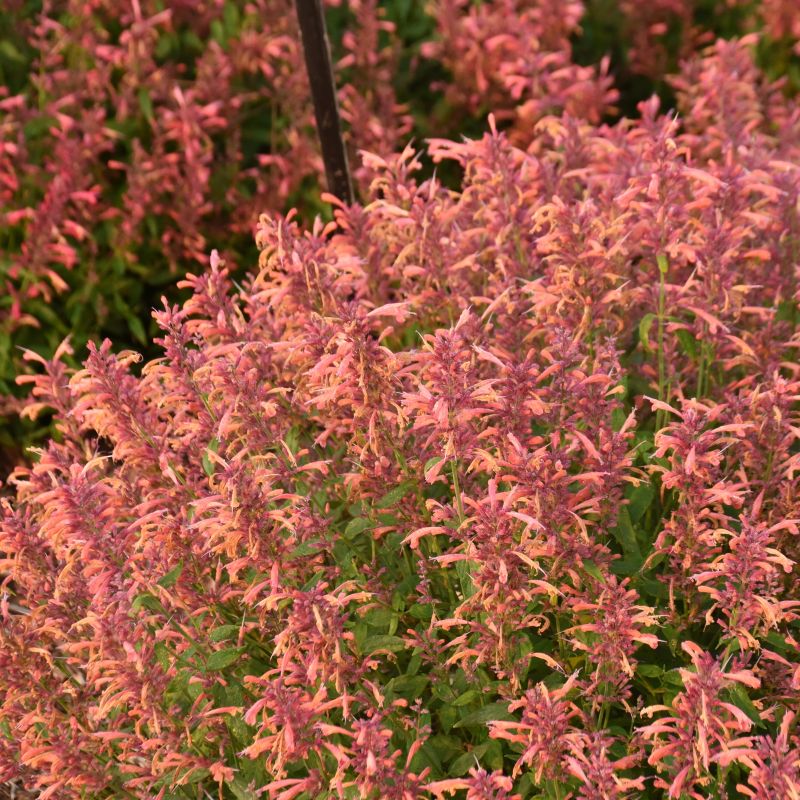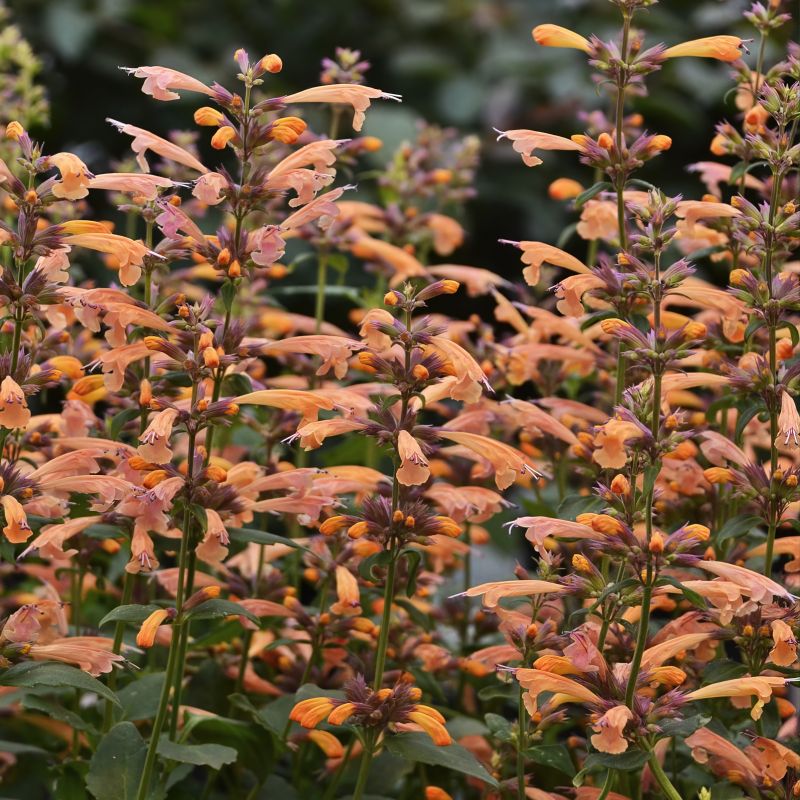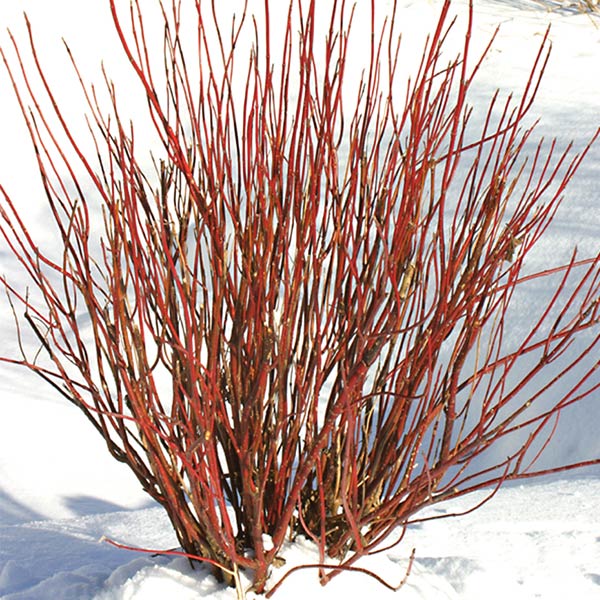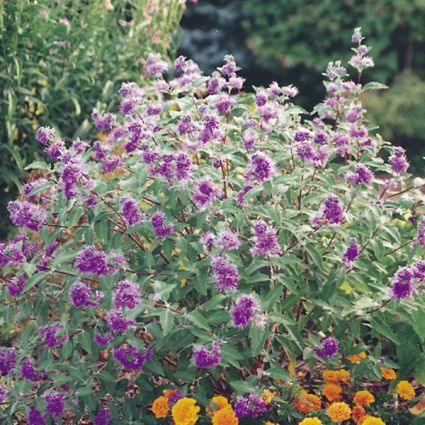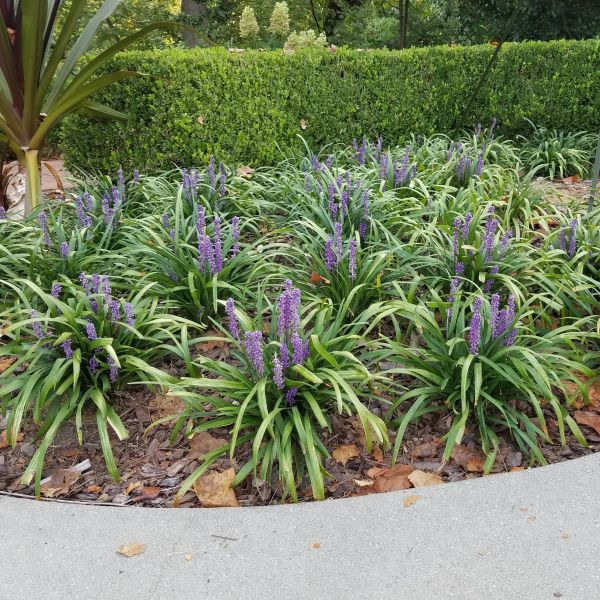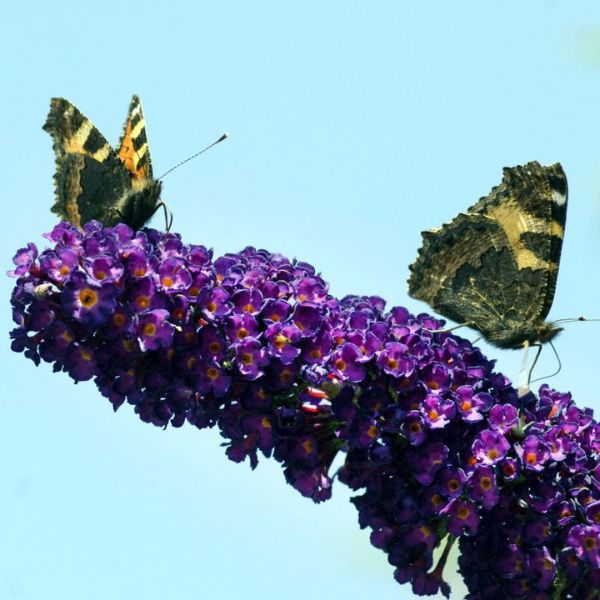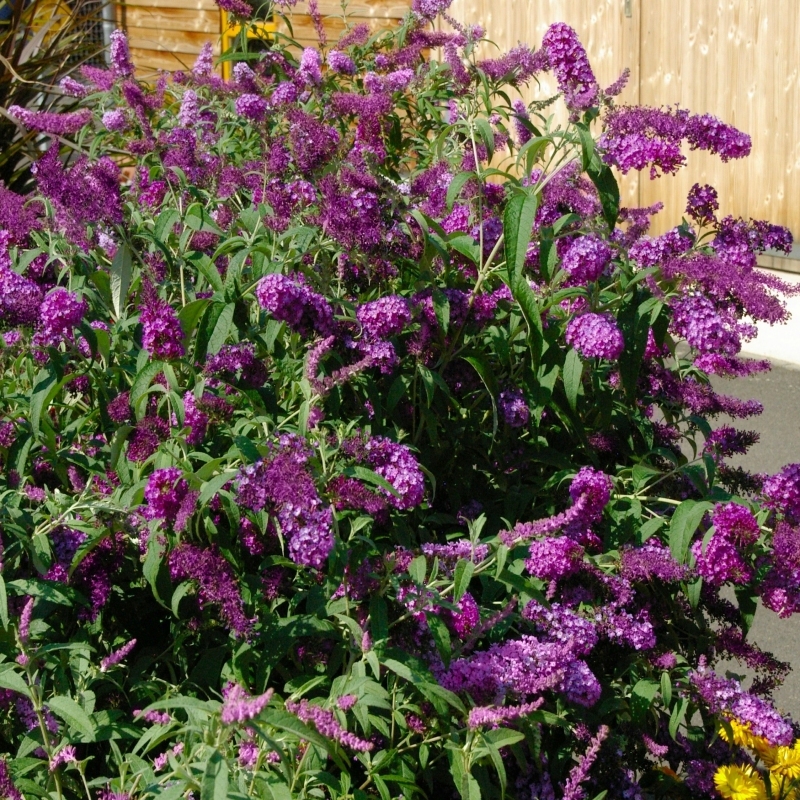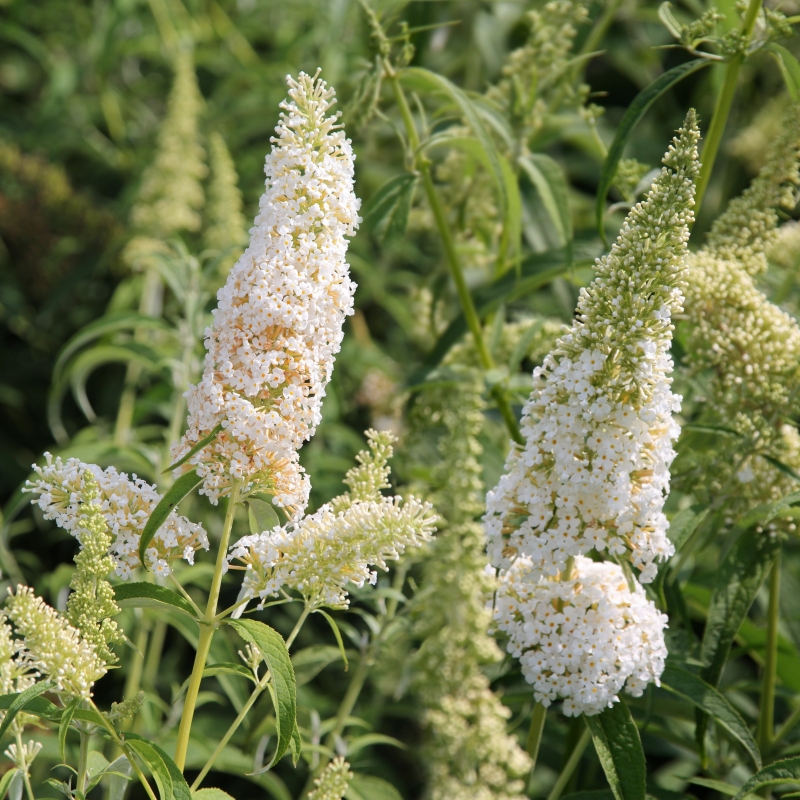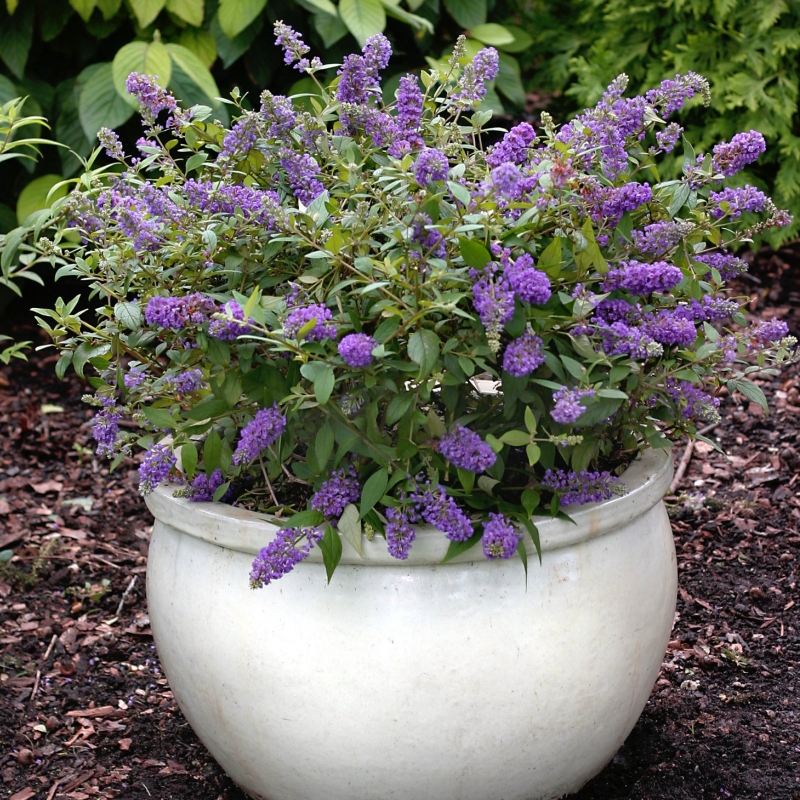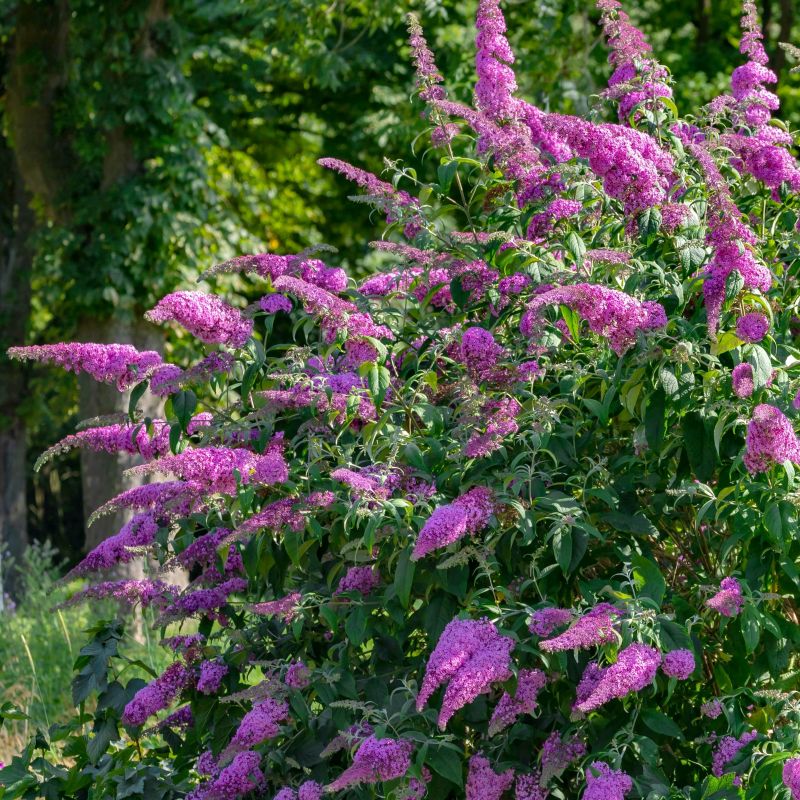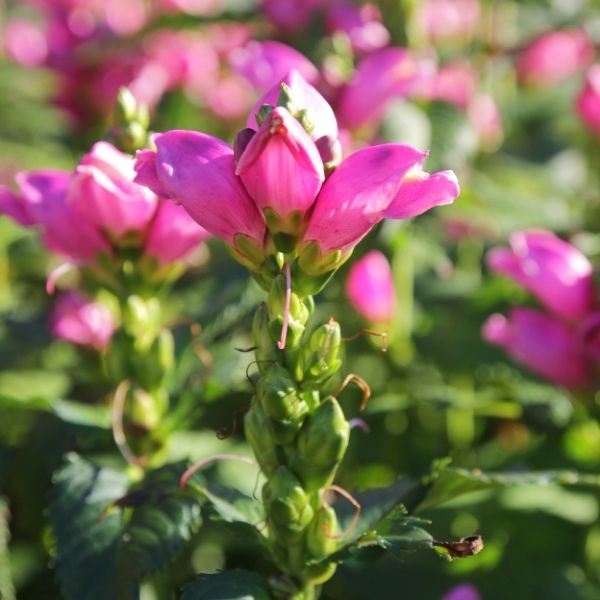
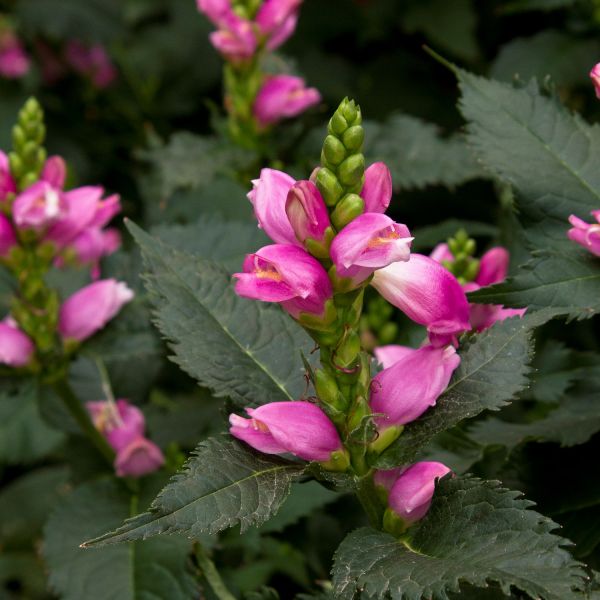
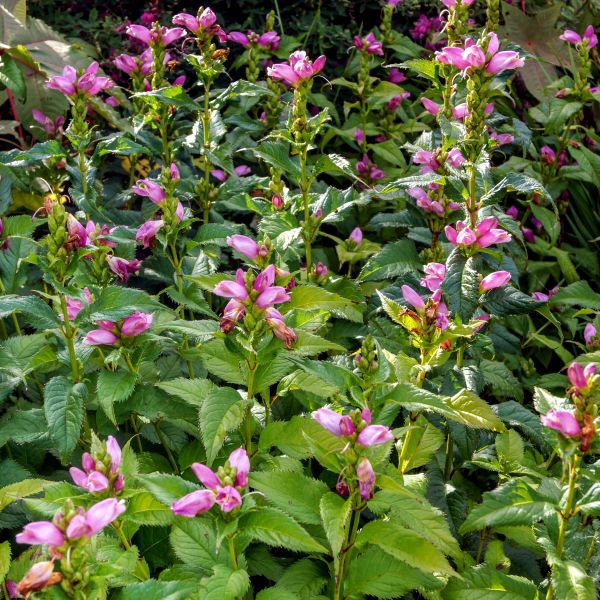
Hot Lips Turtlehead
Chelone lyonii 'Hot Lips'
46 reviews
Hot Lips Turtlehead
Chelone lyonii 'Hot Lips'
46 reviews
- 1 Gallon
- 1.5 Gallon
We are sorry, product is currently out of stock due to seasonal availability. Please check the "Related plants available in your area" section below
Not just beautiful - intentionally selected by ShrubHub's 3D landscape design team to fit real-world spaces and maximize yard potential.
Why Hot Lips Turtlehead?
Hot Lips Turtlehead is a stunning perennial that adds bold color and texture to any garden. With vibrant pinkish-purple flowers that bloom from mid-summer to early fall, this plant attracts butterflies and hummingbirds. It is easy to care for and can handle partial shade to full sun. Hot Lips Turtlehead is a unique addition to any landscape and adds interest to borders, rock gardens, and damp areas.
Related plants available in your area
Sunlight
The Hot Lips Turtlehead plant requires full to partial sunlight, meaning it needs at least 6 hours of direct sunlight per day but can also tolerate some shade.
Watering
Hot Lips Turtlehead (Chelone lyonii 'Hot Lips') prefers consistently moist soil and has a high watering requirement. It is best to water it regularly to keep the soil moist, especially during hot and dry periods.
Fertilizing
Hot Lips Turtlehead plants require a balanced fertilizer with equal amounts of nitrogen, phosphorus, and potassium. It is recommended to use a slow-release fertilizer in early spring and again in midsummer to promote healthy growth and blooming.
Hot Lips Turtlehead: An Unusual Twist on Outdoor Decor
It’s almost impossible to find someone who wouldn’t be instantly dazzled by the mesmerizing beauty of the Hot Lips Turtlehead. Just imagine yourself leisurely walking into a rosy field while surrounded by myriads of these bountiful hot pink blooms. Leaving all your worries behind and forgetting stress ever existed, you lose yourself in the romance and passion this field has to offer. You can have all this and much more with Hot Lips Turtlehead (Chelone Lyonii ‘hot lips’).
While the wider perspective of the Hot Lips Turtlehead suggests a dreamy backyard retreat that is packed with rosy charm, a closer look at the detailed rain garden flower takes you on a journey to explore the endless creativity and unusual beauty of nature.
Resembling a turtle that is hiding in its shell and shying away from your visitors, the flowers of the Hot Lips Turtlehead feature bell-shaped, puffy corollas that cover your outdoor space with a soft pink shade.
To add a quintessential glow to the already-adorable blooms, the Hot Lips Turtlehead boasts fine yellow hairs on the lower petals. This picturesque scenery is equally attractive to butterflies and hummingbirds, adding depth, interest, momentum, and bursts of color to your abode.
These magnificent flowers have a brilliant backdrop of forest green, lance-shaped foliage that perfectly complements the pink shades of the blossoms.
From rain gardens and butterfly gardens to woodland gardens, this deer-resistant herbaceous perennial never fails to lend significance and grandeur to your property.
A burst of pink blossoms is about to boost your home’s aesthetics!
Order your Hot Lips Turtlehead from ShrubHub now!
Plant Information:
| Botanical Name: | Chelone lyonii 'Hot Lips' |
| USDA Zones: | 3 - 8 |
| Water: | Moderate to High |
| Exposure: | Full Sun |
| Soil Needs: | Well-Drained Adaptable |
| Mature Height: | 18 - 24 inches |
| Mature Spread: | 18 - 24 inches |


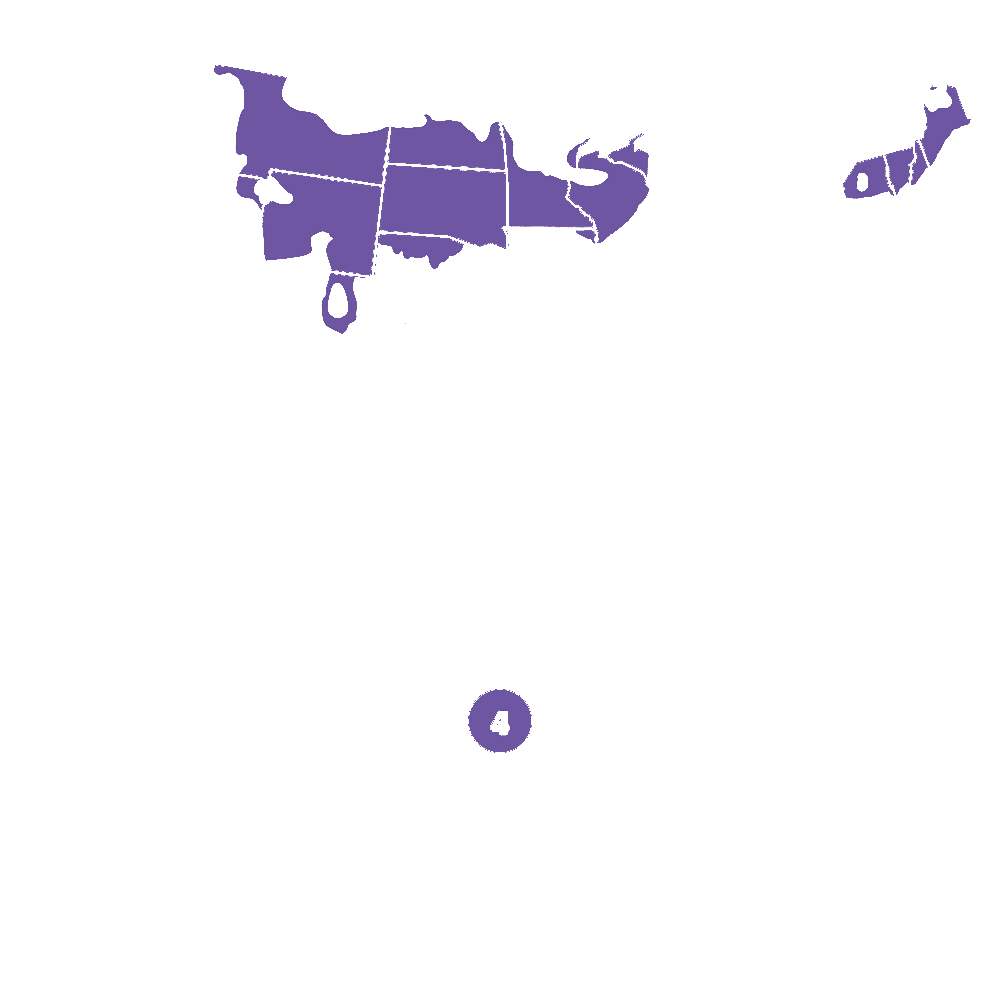
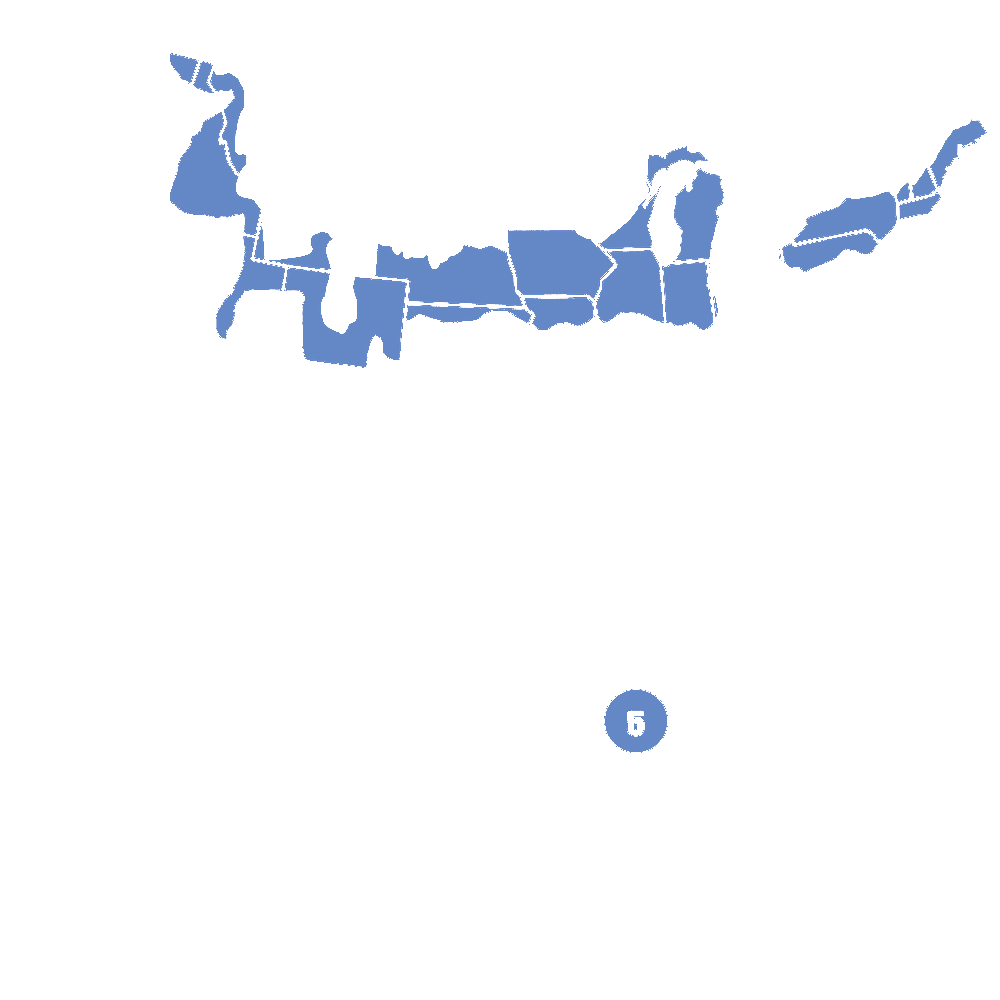
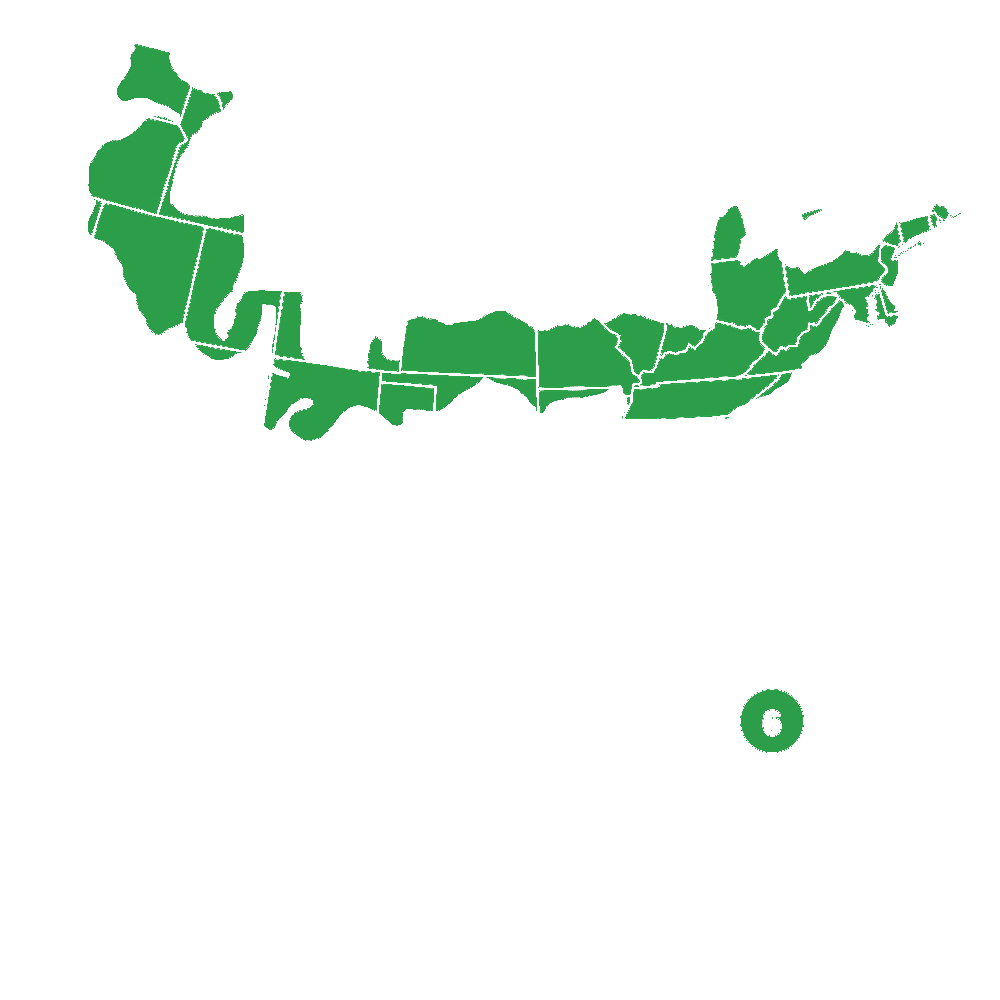

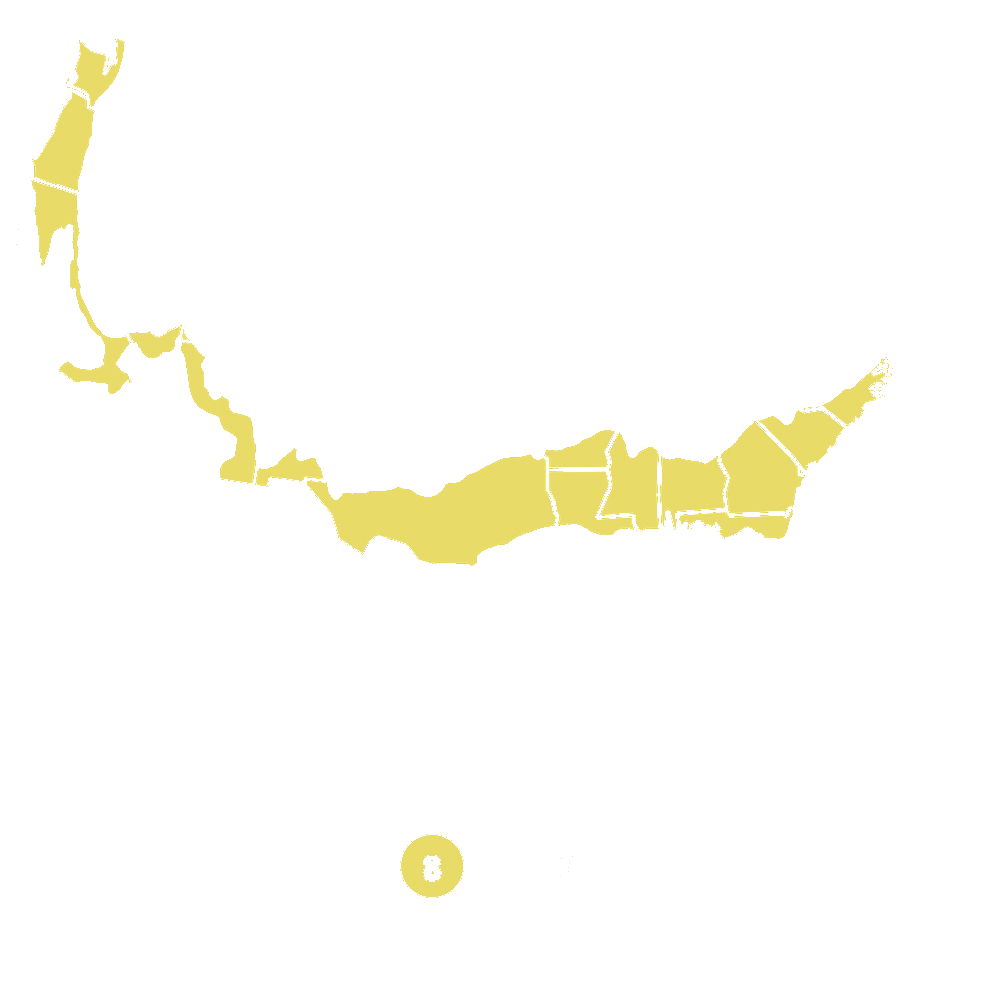
Pollination Info
Pollination Information for Hot Lips Turtlehead (Chelone lyonii 'Hot Lips')
Hot Lips Turtlehead, like other members of the Chelone genus, is a native plant in North America that attracts pollinators such as bumblebees and butterflies.
The flowers of this plant bloom from mid to late summer and are tubular in shape with two lips. The top lip is arched and the bottom lip is flatter. The flowers are typically pink with a white or yellow throat. The shape of the flower and its bright coloration make it an attractive target for pollinators.
Turtlehead species are self-incompatible, which means each plant has separate male and female reproductive organs. This means that cross-pollination is necessary for the plant to produce seeds. In the absence of pollinators, manual pollination can be done by using a paintbrush or cotton swab to transfer the pollen from the anthers to the stigma.
Bumblebees are the most effective pollinators of Hot Lips Turtlehead. They are strong enough to push past the anthers and get to the nectar inside the flower. Butterflies are also frequent visitors to Turtlehead flowers, but they are not as efficient as bumblebees at pollinating them.
In addition to attracting pollinators, Hot Lips Turtlehead is also a larval host plant for the Baltimore Checkerspot butterfly. The leaves of this plant provide an important food source for the butterfly larvae.
FAQ
Hot Lips Turtlehead (Chelone lyonii 'Hot Lips') Frequently Asked Questions
1. What is Hot Lips Turtlehead?
Hot Lips Turtlehead (Chelone lyonii 'Hot Lips') is a perennial plant in the snapdragon family (Scrophulariaceae) known for its beautiful bright pink blooms that resemble turtle heads. It is native to the eastern United States and is commonly found in wetlands and along stream banks.
2. What are the growing conditions required for Hot Lips Turtlehead?
Hot Lips Turtlehead prefers moist, well-drained soil and partial to full shade. It can grow up to 2-3 feet tall and 1-2 feet wide. It is hardy in USDA zones 3-8.
3. When does Hot Lips Turtlehead bloom?
Hot Lips Turtlehead blooms from late summer to early fall, typically from August to September. The bright pink flowers are a favorite of bees and butterflies.
4. How do I care for Hot Lips Turtlehead?
Hot Lips Turtlehead is relatively low maintenance. It prefers to be kept moist but not waterlogged. It benefits from a layer of mulch to help retain moisture and control weeds. It can be divided every 3-4 years in the spring to control its size and maintain its vigor.
5. Can Hot Lips Turtlehead be grown in containers?
While Hot Lips Turtlehead prefers to be planted in the ground, it can be grown in containers as long as the container is large enough to accommodate its root system and the soil is kept consistently moist.
6. Are there any pests or diseases that affect Hot Lips Turtlehead?
Hot Lips Turtlehead is relatively pest and disease-free. However, it may be susceptible to powdery mildew in humid or wet conditions. To prevent powdery mildew, ensure proper air circulation and avoid overhead watering.
7. Can Hot Lips Turtlehead be used for cut flowers?
Yes, Hot Lips Turtlehead can be used for cut flowers. The long-lasting blooms can be cut and placed in a vase with water.
Planting & Care
Planting & Care for Hot Lips Turtlehead (Chelone lyonii 'Hot Lips')
Planting
- Plant in well-draining soil that is rich in organic matter.
- Choose a location that receives full to partial sunlight.
- Plant in the spring or fall.
- Space plants 18-24 inches apart.
- Water deeply after planting.
Care
- Water regularly, keeping the soil evenly moist but not waterlogged.
- Fertilize once a month during the growing season with a balanced fertilizer.
- Deadhead spent blooms to encourage more flowers.
- Prune back to the ground in the fall after the foliage has died back.
- Watch for pest and disease problems and treat promptly if necessary.
Check Out These Verified Customer Reviews:
Customer Reviews
4.7 out of 5 based on 46 reviews
Thank you! Your review has been submitted.
Website was easy to navigate. Found exactly what I was looking for quickly.
Hot Lips Turtlehead exceeded my expectations. Very satisfied with purchase.
Customer service was friendly and helpful. Resolved my issue promptly.
Item has been added to your cart.



